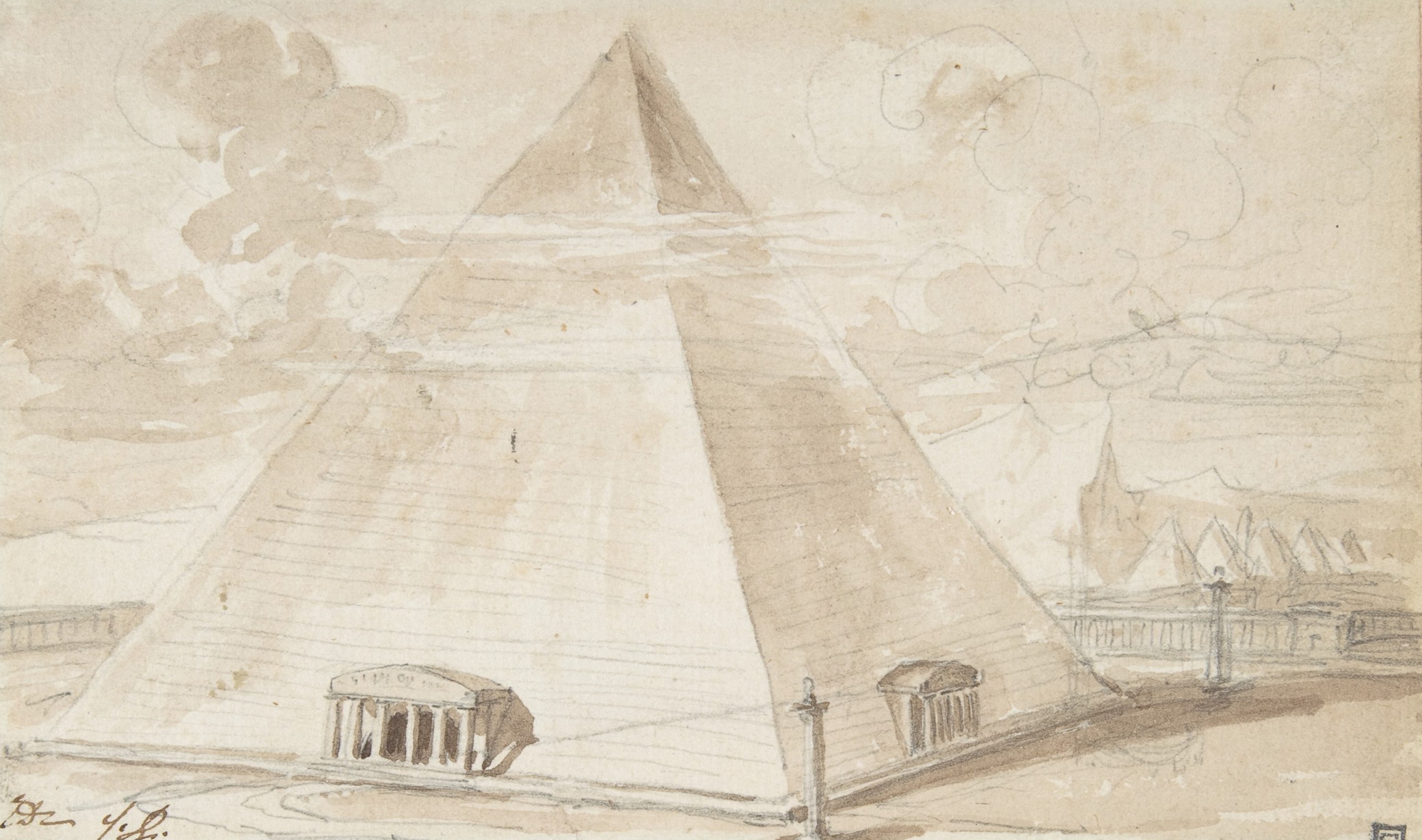
Study of a Pyramid, by Jacques Louis David. The Metropolitan Museum of Art, Edward Pearce Casey Fund, 1979.
• It’s the 150th anniversary of the Fourteenth Amendment: “The story of the Fourteenth Amendment, and in particular its birthright citizenship provision, is one of far more than court opinions and legislative acts.” (Public Books)
• And it’s the 500th anniversary of the dancing plague. (The Public Domain Review)
• On the ancients and their lifespans: “What is the source of the myth that those in the past must have died young?” (Aeon)
• On “Realia”: “Virginia Woolf’s cane may be of little interest to scholars, but it’s an important artifact that was likely the last thing she used before her death.” (NewYorker.com)
• The story of Gala: “Eager to keep money coming in when her husband could no longer paint, she forced him to sign blank canvases and commissioned forgers to complete the paintings, selling them at sky-high original-Dalí prices. Consequently, dealers are often suspicious of any of the artist’s works created from the mid sixties onward.” (The Paris Review Daily)
• Archaeologists may have found the oldest written record of The Odyssey: “The extract, taken from book 14, describes the return of Ulysses to his home island of Ithaca.” (The Guardian)
• Discovering Nixtun-Ch’ich: “It’s a planned, gridded city. It has big plazas, big pyramids...it has everything you expect, only it’s not dispersed over a landscape.” (Archaeology)
• Behind the scenes of a photo shoot at Stonehenge from the nineteenth century. (Atlas Obscura)
• “Who’s in This Mysterious Black Sarcophagus That We Should Definitely Open?” (Jezebel)
• This week in obituaries: “a radical in the vein of Blake and Turner,” a man who admitted he was sometimes confused by space, a civil rights activist, and the former secretary who invented Liquid Paper.